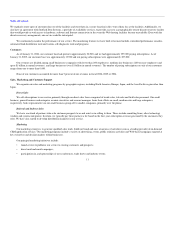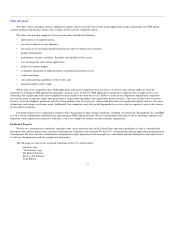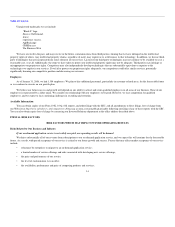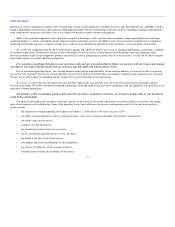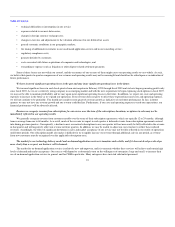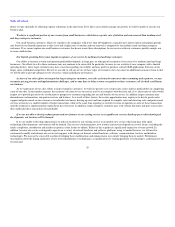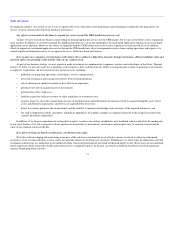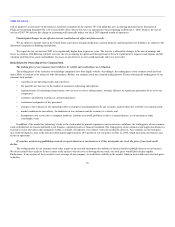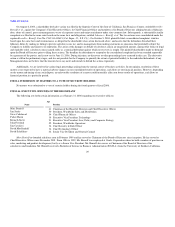Salesforce.com 2005 Annual Report Download - page 23
Download and view the complete annual report
Please find page 23 of the 2005 Salesforce.com annual report below. You can navigate through the pages in the report by either clicking on the pages listed below, or by using the keyword search tool below to find specific information within the annual report.
Table of Contents
future revenue shortfalls by offsetting expense reductions in the short term. If we fail to successfully manage our growth, we will be unable to execute our
business plan.
We derive a significant portion of our revenue from small businesses, which have a greater rate of attrition and non-renewal than medium-sized
and large enterprise customers.
Our small business customers, which we consider to be companies with fewer than 200 employees, typically have shorter initial subscription periods
and, based on our limited experience to date, have had a higher rate of attrition and non-renewal as compared to our medium-sized and large enterprise
customers. If we cannot replace our small business customers that do not renew their subscriptions for our service with new customers quickly enough, our
revenue could decline.
Our limited operating history may impede acceptance of our service by medium-sized and large customers.
Our ability to increase revenue and maintain profitability depends, in large part, on widespread acceptance of our service by medium-sized and large
businesses. Our efforts to sell to these customers may not continue to be successful. In particular, because we are a relatively new company with a limited
operating history, these target customers may have concerns regarding our viability and may prefer to purchase critical CRM applications from one of our
larger, more established competitors. Even if we are able to sell our service to these types of customers, they may insist on additional assurances from us that
we will be able to provide adequate levels of service, which could harm our business.
As more of our sales efforts are targeted at larger enterprise customers, our sales cycle may become more time-consuming and expensive, we may
encounter pricing pressure and implementation challenges, and we may have to delay revenue recognition on these customers, all of which could harm
our business.
As we target more of our sales efforts at larger enterprise customers, we will face greater costs, longer sales cycles and less predictability in completing
some of our sales. In this market segment, the customer's decision to use our service may be an enterprise-wide decision and, if so, these types of sales would
require us to provide greater levels of education to prospective customers regarding the use and benefits of our service. In addition, larger customers may
demand more customization, integration services and features. As a result of these factors, these sales opportunities may require us to devote greater sales
support and professional services resources to individual customers, driving up costs and time required to complete sales and diverting sales and professional
services resources to a smaller number of larger transactions, while at the same time requiring us to delay revenue recognition on some of these transactions
until the technical or implementation requirements have been met. In addition, larger enterprise customers may seek volume discounts and price concessions
that could make these transactions less profitable.
If we are not able to develop enhancements and new features to our existing service or acceptable new services that keep pace with technological
developments, our business will be harmed.
If we are unable to develop enhancements to and new features for our existing service or acceptable new services that keep pace with rapid
technological developments, our business will be harmed. The success of enhancements, new features and services depends on several factors, including the
timely completion, introduction and market acceptance of the feature or edition. Failure in this regard may significantly impair our revenue growth. In
addition, because our service is designed to operate on a variety of network hardware and software platforms using a standard browser, we will need to
continuously modify and enhance our service to keep pace with changes in Internet-related hardware, software, communication, browser and database
technologies. We may not be successful in either developing these modifications and enhancements or in timely bringing them to market. Furthermore,
uncertainties about the timing and nature of new network platforms or technologies, or modifications to existing platforms or technologies, could increase our
research and
20



